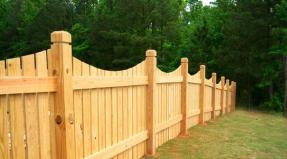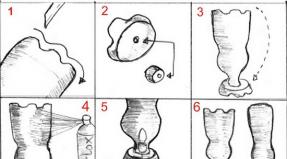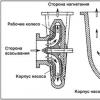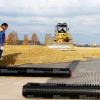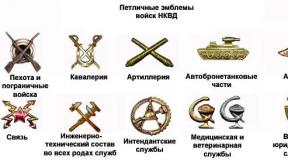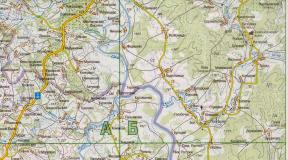Purpose of a volumetric geogrid
Building roads, strengthening banks, laying material on slopes - all this requires modern solutions. Working "the old fashioned way", you run the risk in a couple of years to approach the issue of restoring the roadbed or the need to add material on the slopes. This can be avoided by adding road grids and geogrids to your “tools” arsenal. Easy-to-use and absolutely affordable materials save hundreds of thousands of rubles. And this is how it goes.
Features of the use of plastic road mesh
 Nowadays, the use of a road grid is incredibly relevant. This is due to the fact that every year the load on roadways increases, which greatly increases their wear. An increase in the intensity of traffic flows, the intensification of logistics with the use of heavy-duty transport leads to the development of a new roadway rut after a few months of its operation. The road geogrid allows to prevent this.
Nowadays, the use of a road grid is incredibly relevant. This is due to the fact that every year the load on roadways increases, which greatly increases their wear. An increase in the intensity of traffic flows, the intensification of logistics with the use of heavy-duty transport leads to the development of a new roadway rut after a few months of its operation. The road geogrid allows to prevent this.
It eliminates the possibility of rutting, which is caused by the instability of the base. Crushed stone is used as a pillow for pavement. It is poured onto the ground, leveled and tamped. During operation, the base withstands colossal mechanical loads, which ensure not only the traffic intensity, but also the dimensions of the equipment, in particular, the passage of special equipment, trucks.
Under the influence of external forces, the crushed stone begins to shift. It changes its original position and "creeps" to the sides. He also moves into the soil layer, literally drowns in it. As a result, the base is deformed, voids appear in it, due to which the outer asphalt concrete pavement collapses. Ruts and cracks are formed.
The geogrid does not allow for displacement of rubble. It fixes it in the cells, preventing it from going into the soil and changing its position in the horizontal plane. A stable base serves to preserve the outer layers of asphalt concrete. As a result, the road surface lasts longer. According to experts' calculations, its service life is increased threefold.
Advantages geogrids
The use of a geogrid, the price of which does not constitute a significant burden on the construction budget, allows:
- Reduce the consumption of crushed stone by 30% - due to its effective use as a result of the fact that the geogrid forms a rigidly fixed cushion;
- Extend the turnaround time by 2-3 times, respectively, reduce the cost of road maintenance;
- Provide a strong and durable surface - it is reasonable to buy a road mesh not only for the construction of highways, but also for the laying of sidewalks and footpaths using a similar technology.
Types of geogrids
 Most of the geosynthetic nets on the market today are made of polypropylene. This material is recognized as universal for a number of reasons. Firstly, it is durable, and thanks to the use of the technology of orientation of polypropylene macromolecules, it is possible to achieve a multiple increase in its strength while maintaining the initial weight. Secondly, it is inexpensive, which is also important for products in this area. Despite the fact that in European countries today geogrids are being developed from other types of plastics, it is polypropylene, due to their availability and decent technical characteristics, that retain their positions both in the catalogs of manufacturers and in the ratings of buyers.
Most of the geosynthetic nets on the market today are made of polypropylene. This material is recognized as universal for a number of reasons. Firstly, it is durable, and thanks to the use of the technology of orientation of polypropylene macromolecules, it is possible to achieve a multiple increase in its strength while maintaining the initial weight. Secondly, it is inexpensive, which is also important for products in this area. Despite the fact that in European countries today geogrids are being developed from other types of plastics, it is polypropylene, due to their availability and decent technical characteristics, that retain their positions both in the catalogs of manufacturers and in the ratings of buyers.
Depending on whether the mesh was completely or partially made of oriented polypropylene, such types are distinguished.

We offer a biaxially oriented geogrid, that is, reinforced in two directions. The geogrid is made of polypropylene, therefore it is light and easy to use, it is fixed to the ground with metal anchors, does not change the technology of construction work. A significant advantage is the availability of the road grid - its price ranges from 69 rubles per square meter.
Volumetric geogrid - characteristics
 This geosynthetic material is used to strengthen slopes and banks, embankments. The geogrid, the price of which is affordable, like all geosynthetics, demonstrates high efficiency in fixing any surface filler, be it soil or sand, crushed stone or gravel. The geogrid is made of polymer tapes of various thicknesses (up to 50 cm), laid on a sloping surface and fastened with anchors. In the future, it is filled with the bulk material that should be present on the slope.
This geosynthetic material is used to strengthen slopes and banks, embankments. The geogrid, the price of which is affordable, like all geosynthetics, demonstrates high efficiency in fixing any surface filler, be it soil or sand, crushed stone or gravel. The geogrid is made of polymer tapes of various thicknesses (up to 50 cm), laid on a sloping surface and fastened with anchors. In the future, it is filled with the bulk material that should be present on the slope.
The cellular structure of the geogrid, which you can buy at StroyPlastic Center, excludes the displacement of bulk material. This is especially evident in the example of road and railroad embankments. Their shank and gravel embankments are subject to regular vibration action, which creates conditions for the displacement of the filler. Over time, the embankment collapses. The volumetric grating eliminates vibration displacement by supporting the embankment and reinforcing the base of the roadway.
Purpose of a volumetric geogrid
 Geogrid is relevant, the price of which is from 170 rubles per square meter, and in private construction, landscaping. The cost of a geogrid is not high, but it can be used to build durable green slopes that are not subject to erosion and disturbance of the grass cover. To do this, the material is fixed on the slope, covered with soil, and sown with lawn grass. It sprouts and braids around the polymer frame with roots. The upper soil layer formed in this way becomes monolithic, durable and not prone to landslides and erosion.
Geogrid is relevant, the price of which is from 170 rubles per square meter, and in private construction, landscaping. The cost of a geogrid is not high, but it can be used to build durable green slopes that are not subject to erosion and disturbance of the grass cover. To do this, the material is fixed on the slope, covered with soil, and sown with lawn grass. It sprouts and braids around the polymer frame with roots. The upper soil layer formed in this way becomes monolithic, durable and not prone to landslides and erosion.
A geogrid is a modern uncontested solution if it is necessary to form erosion-resistant slopes and slopes. The calculation of its quantity is carried out in accordance with the manufacturer's recommendations. There are no general formulas, so it is important to clarify the calculation technique for each product name. In this case, there is a general scheme for calculating the number of used fastening anchors. It involves the installation of one anchor in each cell along the edges of the mat and in the central part every 1.2 meters.
The price for a geogrid is as affordable as for other geosynthetic materials. And in the "Center StroyPlastic" you can order it in the required volume.

